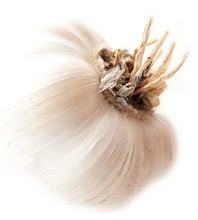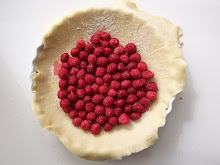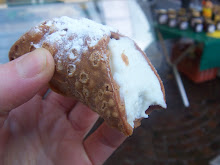A loaf of Bread encapsulates within it the cultural, historical and geographical makings of a place. Like a genetic code, the ingredients’ origins, preparation methods and formed shape deliver a story enhanced when spread with a thick layer of butter. Flour, water and leaven are code to endless combinations of bread (The addition of salt to the equation came at a much later point, but had a significant contribution to the flavor factor).
Breads are made from the earth and the goods of the land, be it cornmeal in America, garbanzo beans in India or durum flour semolina in Italy. The daily routine and the annual calendar also play a role with some are breads eaten on certain days of the year and others that accompany each mealtime throughout the day. Flat, tall, round or square, breads are commonly baked, but also boiled, fried and even cooked.
In Israel, being 'Jewish' is the basic fundamental commonality among the majority of ethnic communities. A close examination of the modern 'Israeli foodscape reveals influences from some 80 different nations and many distinct culinary backgrounds. Food is linked to family, home and ancestry, not with land, and this is demonstrated by the diversity in the available variety of local breads.
In the days leading to Passover, it is enough to observe the general panic at the prospect of a week with no bread to understand that bread has reached the status of a national obsession.
A closer inspection reveals the special status of bread in Judaism. We may be used to Medieval Christian artwork depicting the fruit of knowledge as an apple, yet ancient classical Jewish texts such as the Talmud have reached a different conclusion, or rather, several. According to these texts the citron, figs, and fruit of the vitis could all have been the forbidden fruit. Another interesting theory proposes wheat was the forbidden fruit, and that Eve had sawn, reaped and ground wheat into flour before she baked a loaf of bread and offered it to Adam, making a clear connection between bread and wisdom.

The Halacha (the collective body of Jewish religious law) also recognizes the significance of bread. According to the Halacha discarding bread, using it as a vehicle to transport food from the plate to the mouth or to soak up liquids are acts of disrespect, and thus forbidden. This is not a matter to be taken lightly and so, to avoid any confusion or a sign of disrespect, a set of specific guidelines defines and clarifies the do’s and don’ts of handling bread.
As observant Jews do not cook on the Sabbath (Saturday), and in order to provide food for the Sabbath day, various cooking techniques developed, and are still practiced to this day. The food is prepared before the Friday night, after which it is left to slowly cook overnight on a hotplate or in the oven. This often results in heavily caramelized, heartily satisfying dishes.
Bread is no exception and one such example is the Kubaneh.
The Jewish Yemenite Saturday breakfast bread is not available at any bakery, but instead is made on a weekly basis at Yemeni households. The sticky yeast dough is prepared and leavened. It is then fortified with Smen, also called samneh; smoked and aged clarified butter, usually made from goat or sheep milk, characterized by a strong rancid taste and smell.
It is then baked overnight in a covered aluminum pot, and, on a low heat, caramelizes from bottom to top. By breakfast time the entire pot is filled with puffy golden brown bread rolls and the stimulating aroma of baked yeast dough spreads through the Saturday morning air.
In addition to its rich flavor, soft texture and good looks, Kubaneh is also the edible solution that developed in response to the constraints set by a religious practice and the available local ingredients of a particular terroir.
Traditionally it is served as part of a savory breakfast alongside a hard-boiled egg, a fresh tomato salsa and a spicy chili sauce, but it would also be the perfect start to the day served with butter and jam.

Kubaneh
Serves 10
The Kubaneh is baked overnight in a covered aluminum pot but any casserole or baking dish with a tight cover will work.
What with Smen not being widely available, the recipe calls for butter as an equally satisfying alternative.
Ingredients
1 kg / 2.2 lbs/ 7 cups unbleached all purpose flour, sifted
1½ Tbs active dry yeast
1Tbs sea salt
500ml / 1 pint / ½ quart Luke warm water
¼ cup vegetable oil
½ cup / 1 stick butter, melted and brought back to room temperature
2 Tbs sugar or honey
In a mixing bowl, combine the flour and yeast.
Mix in the honey, water and oil. once all the ingredients have been incorporated add the salt.
Knead the dough until it is smooth, but still soft, about 10 minutes.
Cover the bowl with a plastic bag or a towel and allow to rest for ½- 1 hour
Put dough in a clean, well-oiled bowl, cover with a with a plastic bag or a towel, and allow to rest for ½- 1 hour, until it has doubled in volume.
Divide the dough into 10 pieces, place on a lightly floured work surface, Cover with a plastic bag or a towel and allow to rest 20 minutes.
Prepare a large saucepan:
Grease the bottom and sides of the saucepan with either butter or oil. cut out parchment paper the size of the saucepan and place at the bottom.
Lightly oil the work surface, and using an oiled rolling pin roll out the dough to a circle, about 15 inches diameter. Its ok if the dough tears or raptures.
Generously spread with butter and fold as you would to make an envelope: roll 1/3 towards the centre, then fold the opposite 1/3 towards the centre. You should end up with a 2.5 inches wide strip.
Roll to a spiral (not too tightly) and place in a saucepan, with the spiral facing up, and the seam against the saucepan wall.
Make sure the saucepan is double the height of the Kubaneh and allow about an inch space between each piece.
Continue with remaining pieces of dough, arranging them in the saucepan to the shape of a flower.
Cover the saucepan, place in a warm place and allow a final rest of 30 minutes.
Meanwhile preheat the oven to 350°F.
Bake for 30 minutes, then reduce the temperature to 200°F and bake overnight. Alternatively, place on a hot plate and bake overnight.
Turn the bread out onto a wire rack to cool.
Serve warm.
 I don't own a summer house in Provence or a beach hut in the South of France. I've been hot and sweaty and immensely grateful for having an air conditioner, a piece of useful machinery that has kept me sane the past few weeks. This week I left Tel Aviv for a day trip to the land beyond, for a short yet effective vacanza.
I don't own a summer house in Provence or a beach hut in the South of France. I've been hot and sweaty and immensely grateful for having an air conditioner, a piece of useful machinery that has kept me sane the past few weeks. This week I left Tel Aviv for a day trip to the land beyond, for a short yet effective vacanza.

 This is outside. Indoors is the kitchen; the core of the house. The floor is always covered with bowls overflowing with colorful goods from the garden and baskets with their remains, on their way back to the garden, as compost or chicken feed.
This is outside. Indoors is the kitchen; the core of the house. The floor is always covered with bowls overflowing with colorful goods from the garden and baskets with their remains, on their way back to the garden, as compost or chicken feed.  On the morning I arrive a crate of mushroom is quickly transformed to a table centerpiece resembling a giant coral reef that has been pulled out of the water. The furnace is working on full power scorching tomatoes as fresh cheese and mushroom focaccias are proofing.
On the morning I arrive a crate of mushroom is quickly transformed to a table centerpiece resembling a giant coral reef that has been pulled out of the water. The furnace is working on full power scorching tomatoes as fresh cheese and mushroom focaccias are proofing. I spent the morning strolling the terraces, picking herbs, munching on leaves and breathing the the cool breeze. Conveniently, the neighbors are bee keepers and honey is on the tap. Between plum, sage, Marjoram and wild flower honeys, I choose them all. One of each. You can never have too much of a good thing.
I spent the morning strolling the terraces, picking herbs, munching on leaves and breathing the the cool breeze. Conveniently, the neighbors are bee keepers and honey is on the tap. Between plum, sage, Marjoram and wild flower honeys, I choose them all. One of each. You can never have too much of a good thing.














